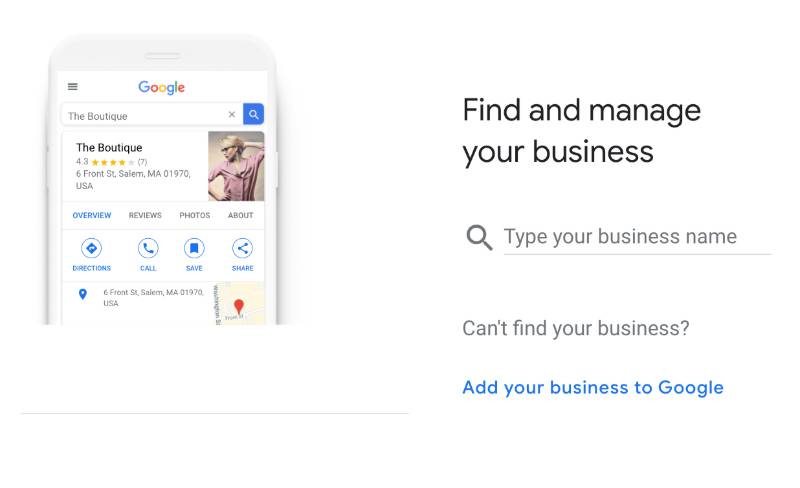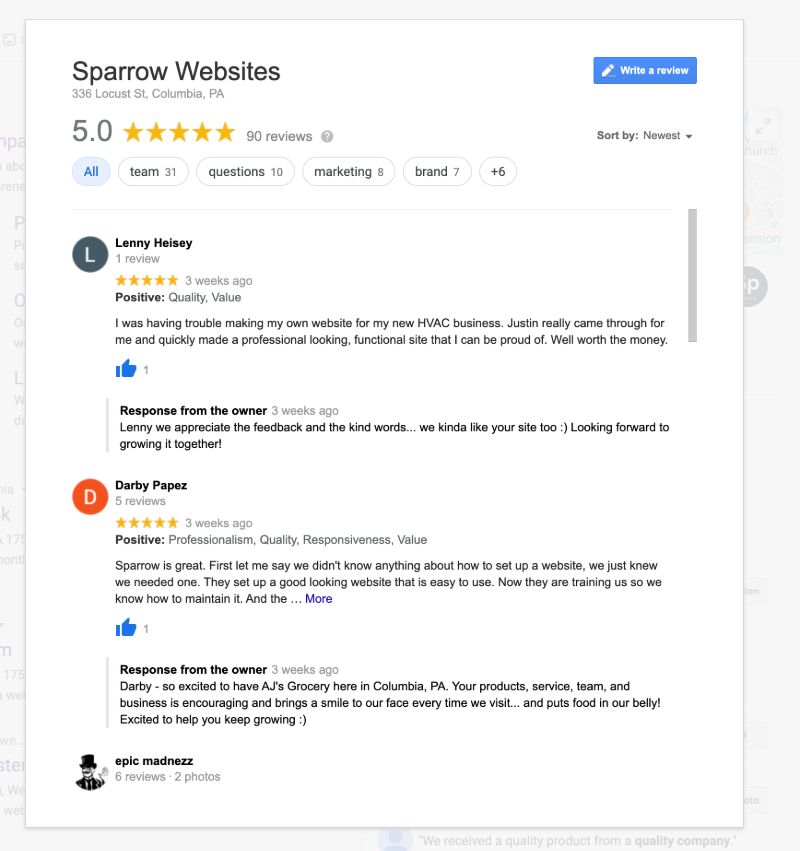This week’s strategy session covers the most recent studies, as digested by Adam Grim, who eats this stuff for breakfast (Who needs Wheaties?).
The studies regarding tracking 2020 trends on local search engine optimization (SEO) were recently released. We will be sharing highlights from what Adam gleaned from his research. Specifically, what things can you do to make your business listings rank higher in Google? Reports will be linked at the end so you can see the studies and do a deeper dive for yourself.
1. Local SEO needs to be a priority.
We’ve been discussing SEO for quite some time now, so it shouldn’t be a surprise that small businesses need to rank higher in Google in order for their business to do well. Small businesses like to focus on social media interactions, SEO, and a bunch of other digital marketing tactics; but in analyzing the studies from this year’s trends, we’ve seen that 80% to 90% of all traffic is STILL coming from search engines.
Human behavioral patterns show that if someone is looking for a service or product, they will use a search engine to fulfill that need. Outside of word-of-mouth, SEO is the most important thing you can consider. If you can make time for only one thing in marketing your business, make it something that will increase your search engine marketing because that is from where most of your customers are coming.
2. Spend most of your time on Google My Business.
Now, we’ve been talking about Google My Business (GMB) lately and how each person with a Launch Kit or website from Sparrow has the capability to activate this service. The effects GMB listings have on your business increased dramatically this year.
In the past, we’ve encouraged our clients to claim directory citations, add links, and website content. All of these are still significant ranking factors but will play a little less of a role as time progresses. Now that all of 2020’s studies are out, GMB seems to be playing the biggest role in search engine rankings.

So, what does that mean for you? That means you don’t want to set up your GMB profile and forget about it. Just because you have a GMB listing doesn’t mean you’ll automatically outrank your competitors when someone searches for your industry “near me”. What you need to do is go to Google My Business and optimize your profile as much as possible.
Ideally, you would be adding something to your profile every week. You can list special offers, add new images, post your blogs, announce new products, or add videos of your current projects.
While the majority of people who search will land on your website, a significant number will only look at your GMB listing. That means, first impressions matter. Your GMB profile should be so enticing with photos, posts, excellent reviews, friendly images of your staff that the searcher is compelled to call you.
3. Really Push Customer Reviews.
According to the studies, customer reviews continue to jump up in the importance of ranking. Not just the number of reviews you have, but also what people say about you.

The complication within GMB is that you can only pick one category of service, even if you have multiple services you provide. So, if you choose one primary category and several secondary, Google’s algorithm will not put as much weight on the others if someone searches for it. The way to increase the odds of being found in your secondary services is if a customer leaves a review mentioning that service by name.
This makes proactive efforts in collecting reviews extremely relevant. Give your customers a link directly to your profile and ask them to leave feedback about your services. Second to the content in your GMB profile, customer reviews are the fastest-growing factor in the local SEO world.
4. Links and website content still matter
Even though Sparrow Websites is in the business of helping build beautiful websites for small businesses, we have to be transparent and tell you that the activity and time spent on your website is not as beneficial (this year) as GMB and search engine optimization. But, even with that reality, don’t neglect your blog posts and outside linking pursuits.
Our advice is to focus on GMB and collecting customer reviews, but also consider the website content you have. There are studies that show if you’re creating quality content on your website that is local to your region or county (like industry-specific jobs, reviews from customers, and informational blog posts), you are much more likely to be noticed by your local audience because you have used those keywords in your posts.
Getting down to specifics:
- Spend more time with local SEO (as much as you can)
- Spend the majority of your time on GMB and collecting customer reviews
- If you have extra time, build out your website and write some quality blog posts about your industry and insert your specific region as keywords to help you rank higher.
- And last, work on connecting with independent websites. Ask them if they will link over to your website. It’s not as vital as it was in past years, but it still helps quite a bit for local SEO.
5. Google is becoming more “pay to play” space.
This final piece of information sounds like bad news, but it’s not really that surprising. Google is now offering new ad formats, broadening the ad formats they already have, and there seem to be some indications that GMB listings may at some point become a paid service.

So what do we do with this information? As the medieval farmer quoth: “Make hay while the sun shines.” Right now, GMB is free. All of the services we’ve mentioned above are, so far, free. So take this opportunity and use all of these tools to help your business rank better in the search engines. Being ahead of the trends and pushing forward by taking proper advantage of these options, your business has nowhere to go but up.
Practical Advice with Adam
Begin thinking and developing a monthly marketing budget so you can work out a plan to continue growing your business. This plan includes
setting money aside so you can invest it back into your business. In fact, you should have a five-year plan in which you work out each phase of your business’s growth and development.
Years One & Two – organic work (free) like social media promotions, writing quality content, and setting up profiles and connections with other businesses in your industry. Make a plan for how you will budget your money once you’ve created enough cash flow for investment.
Years Three & Four – This is when you should have the extra money you’ve planned to spend on digital advertising for faster growth.
Keep in mind, all these free markets (like Facebook and YouTube… and now, possibly, Google) are becoming “pay to play” marketplaces. They are, first and foremost, businesses. They want to make money, too. Your goal is to out-market and out-advertise your competition and have a nice, healthy, growing business moving forward. So, utilize these tools to the best of your ability and take advantage of the time you have while they’re still free.
https://www.davidmihm.com/local-seo-2020.shtml
https://www.brightlocal.com/learn/key-ranking-factors-for-local-seo/
2020 Local Search Ranking Factors Presentation
Take a look at these three links. You can go deep-diving on the studies that we’ve discussed. As always, please reach out with any questions you may have. We are eager to hear from you.






